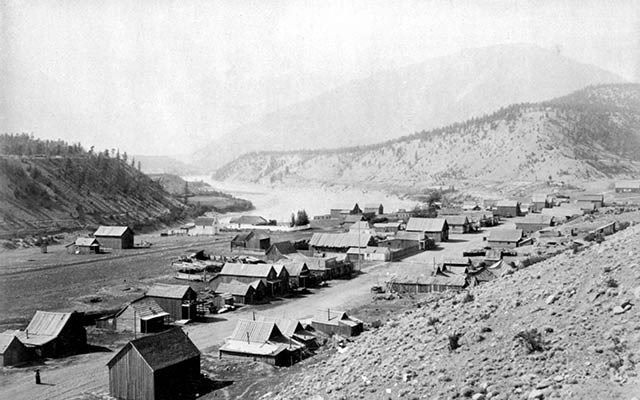The community of Lytton is getting a unique hit of history with the opening of a Chinese history museum made possible by the largest employer in the community.
Lorna Fandrich — who along with husband Bernie owns and operates Kumsheen Rafting — is putting the finishing touches on the new Lytton Chinese History Museum, which was decades in the making and whose roots run deep into the previous centuries.
The lot on Lytton's Main Street was the site of the temple of Joss House, which was built in 1881 and for years was a focal point for area Chinese immigrants — 17,000 of whom worked in the railway link through the Fraser Canyon.
"Most of (the workers) were more educated, more trained, and they came here with the idea of making money and going home, which didn't always work out," said Lorna. "They had been doing this all over the world."
The Fandrichs bought the lot in 1980 and it sat until Lorna researched the history of Joss House and vowed to share the story and rich cultural connections of those who helped shape the area.
"I wanted to bring awareness of the Chinese in the Lytton area and I'm focusing more on what they had here and also what they brought to the area," said Lorna. "That's my goal."
The museum officially will open its doors May 13 on a site that has been granted official heritage status by the B.C. government. And it was just three years ago that the government issued its apology for historical wrongs against Chinese Canadians.
"The provincial government is bringing some recognition to this," she said, adding that she was surprised that government didn't get the ball rolling on this before she did.
"For sure, government could have more easily obtained artifacts than I could."
Lorna's quest took some interesting turns in the acquisition of artifacts, such as the longtime resident whose hobby of bottle collecting also turned up Chinese items, which she purchased. And another Chinese resident, who no longer lives in Lytton, passed on some artifacts, one of which is a decorative headband that babies wore at a traditional celebration held six weeks after birth.
"It's my most favourite item," she said of the baby's headband, which is among about 250 artifacts, including photos, that help to tell the story of those who worked and lived in the community. "Those are the things that make it fun for me."
The artifacts include pots used for storing food, cooking implements and a few opium-related items.
"I've been looking at many other Chinese museum sites, primarily in Australia, New Zealand and the U.S. and there are only four or five things I need to equal what they have. I don't have an actual opium pipe," she said with a laugh.
The museum is a little larger than the original structure, and Lorna said the plan is to have bus tours visit the site, so the building has a small kitchen and wheelchair-accessible washrooms.
Joss House was built in 1881 and officially opened in 1883. But by 1901, an area resident named Guiseppe Taverna was requesting information from the Dominion land agent to purchase the property. Taverna's requests carried on with numerous letters until 1917 when government instructed the land agent to ascertain the value of the lot.
In a story in The Province in 1933, correspondence from 1918 tells of Taverna's ongoing quest to buy the structure that was next to his house:
"...There is a letter with Taverna's mark alleging 'it is a firetrap,'" it said. "Tramps go there to sleep and eat. They throw matches and cigarettes about. If it burns, my own house will burn as well and maybe all of Lytton. There will be loss of life."
Taverna finally bought the house for $43 and housed chickens in it — something the local Chinese did not agree with at all. However, they were powerless to do anything about it as they could not prove they had any right to title on the property.
At one point there was a flurry of correspondence between Taverna, the land agent, the Chinese Consul and a notification was even sent to the government of Chinese president Sun Yat Sen.
Flash forward to the present and it is clear the sacred nature of the building is still recognized by some — Lorna said she frequently noticed a local Chinese woman visiting the site and bowing in deference.
"So it must have some significance still," she said, adding that the structure won't be a functioning temple, but does have an altar and area for meditation.




